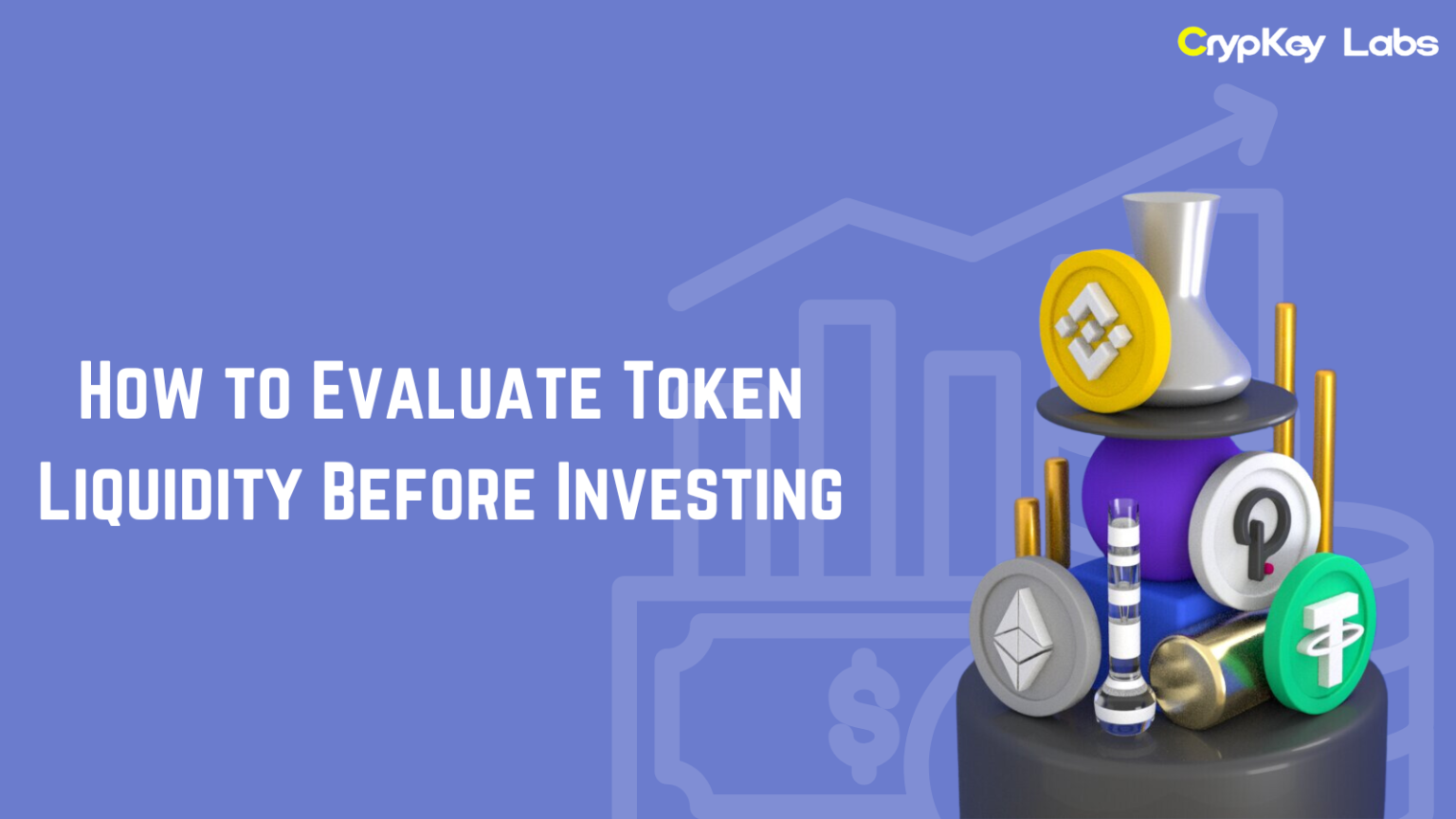Are you considering diving into crypto investments and wondering what makes one token a good pick over another? If so, you’ve probably come across the term liquidity. Token liquidity is a crucial factor that financiers often overlook—but it can make or break your investment strategy! Let’s break it down and learn how to evaluate token liquidity before you invest your hard-earned money.
What Is Token Liquidity and Why Does It Matter?
In the simplest terms, liquidity refers to how quickly and easily you can buy or sell an asset without significantly affecting its price. Think about it like this: if you’re selling a concert ticket in a small town with only a handful of people interested, you’ll probably have to drop your price to attract buyers. On the other hand, if you’re selling that same ticket in a big city with tons of fans, you’ll find a buyer quickly at market price. That’s liquidity in action!
Token liquidity works similarly. High liquidity means you can buy or sell your tokens with little impact on their price. This is great for both short-term traders and long-term investors because it reduces volatility and makes it easier to exit a position if needed. Low liquidity, however, can cause problems, like wider bid-ask spreads, high price slippage, and difficulties in selling your tokens at a fair price.
Why Liquidity Matters to Crypto Investors
Crypto markets are known for their wild swings, and liquidity plays a big role in this. High liquidity usually means more price stability, making it easier for financiers to enter and exit trades without incurring big losses due to slippage. On the flip side, low liquidity can make token prices highly volatile, causing dramatic price swings even with small trades. For financiers, understanding and evaluating liquidity is essential for managing risk and making smarter investment choices.
Now that we know why liquidity is important, let’s look at some key factors you should consider when evaluating the liquidity of a token.
Trading Volume: The First Liquidity Check
The first (and often easiest) metric to look at when evaluating token liquidity is trading volume. This represents the number of tokens traded within a specific time frame, typically daily. A high trading volume indicates strong interest and activity in the market, which generally means the token is liquid.
Why Trading Volume Matters
When a token has high trading volume, it’s likely to have plenty of buyers and sellers ready to take the other side of your trade, ensuring you can quickly buy or sell without drastically affecting the price. Low volume, on the other hand, suggests limited trading activity, which can make it harder to sell your tokens without waiting or reducing your price.
Where to Check Trading Volume
You can easily find trading volume data on popular crypto tracking websites like CoinMarketCap or CoinGecko. Just enter the token name, and you’ll see the daily trading volume listed along with other key stats.
Bid-Ask Spread: A Quick Indicator of Liquidity
Another useful metric to assess liquidity is the bid-ask spread. This is the difference between the highest price buyers are willing to pay (the bid) and the lowest price sellers are willing to accept (the ask). The narrower this spread, the higher the liquidity.
How to Interpret Bid-Ask Spread
When the spread is narrow, it indicates a well-balanced market with lots of buyers and sellers who agree on the token’s value. A wider spread, however, signals lower liquidity and could mean you’ll end up paying a premium when buying or receiving less when selling.
Example: High vs. Low Spread
Imagine you want to buy Token X. If the bid price is $1.00 and the ask price is $1.01, the spread is only $0.01—super narrow! But if the bid is $1.00 and the ask is $1.10, that’s a big gap, indicating low liquidity and higher potential costs.
Market Depth: Diving Deeper into Liquidity
Market depth shows you how much of a token is available at different price levels. A deep market has large quantities of tokens at various prices, which can absorb significant buy or sell orders without a big impact on price. A shallow market, however, lacks such flexibility.
Using Market Depth to Your Advantage
A quick way to view market depth is by looking at the order book, which shows buy and sell orders at different price points. If the order book shows plenty of tokens on both sides (bids and asks), the market has good depth. If you see only a few orders, that could mean the market isn’t very liquid, and larger trades could cause price fluctuations.
Where to Check Market Depth
You can often view the order book and market depth on major exchanges that list the token. Binance, Coinbase Pro, and Kraken are a few exchanges that offer detailed order book data. Just keep in mind that decentralized exchanges (DEXs) might have less transparency on order book data, though aggregators like Uniswap or SushiSwap provide good insight into liquidity pools.
Exchange Listings: More Listings, More Liquidity
The number of exchanges listing a token also affects its liquidity. A token available on multiple exchanges, especially high-volume ones, is likely to have better liquidity. Major exchanges, like Binance, Coinbase, and Kraken, offer greater exposure and typically higher trading volumes than smaller or newer exchanges.
Why Multiple Listings Matter
When a token is listed on multiple reputable exchanges, it’s accessible to more traders, increasing the potential volume and liquidity. Conversely, if a token is listed on only one or two small exchanges, you might have trouble buying or selling it easily.
How to Check Exchange Listings
CoinMarketCap and CoinGecko provide lists of exchanges where a token is available, along with volume information for each platform.
Token Holders Distribution: Who’s Holding the Tokens?
Token distribution is another key factor to consider when assessing liquidity. If a token is concentrated in a few wallets, liquidity could be impacted. For instance, if a small number of wallets hold a large percentage of the token supply, there’s a risk that those holders could dump their tokens, causing price volatility.
How to Check Token Distribution
Blockchain explorers like Etherscan or BscScan offer transparency into wallet balances for various tokens. By checking the top holders, you can get an idea of whether the token is widely distributed (good for liquidity) or held by a few (which could indicate potential risk).
Tools and Resources for Evaluating Token Liquidity
Luckily, there are plenty of tools available to help you assess liquidity metrics:
- CoinMarketCap and CoinGecko: These provide trading volume, exchange listings, and historical data for tokens.
- DEX Aggregators (like Uniswap, SushiSwap): These offer real-time liquidity data for tokens listed on decentralized exchanges.
- On-chain Analysis Tools (like Etherscan, Glassnode): Use these to check holder distribution, token transfers, and other blockchain-based metrics.
A Quick Step-by-Step Example Using CoinMarketCap
- Enter the Token Name: Start by searching for the token on CoinMarketCap.
- Check Daily Volume: Look at the volume to get a sense of trading activity.
- View Exchange Listings: Scroll to see the exchanges listing the token and volume distribution.
- Evaluate Spread and Order Book: If available, view the bid-ask spread or visit the token’s exchange page to see the order book depth.
Using these steps, you can get a snapshot of a token’s liquidity in minutes!
Red Flags to Watch Out For
Not all tokens are what they seem! Here are some red flags that may indicate low liquidity or a risky investment:
- Low Daily Volume: If a token has consistently low volume, it could be hard to sell.
- Wide Bid-Ask Spread: A large spread suggests a lack of buyer/seller interest at market prices.
- Few Exchange Listings: Limited availability could mean low demand.
- High Concentration Among a Few Wallets: Large holders could impact liquidity if they sell off.
Also, beware of inflated trading volume, which can result from wash trading—a tactic where traders artificially boost volume to make a token appear more popular than it is.
Conclusion
Token liquidity is a key factor for any crypto investor to consider before putting money into a project. High liquidity reduces the risk of price manipulation, allows you to exit positions more easily, and generally indicates a healthy market. By understanding trading volume, bid-ask spread, market depth, exchange listings, and token distribution, you can make smarter, more confident investment choices.
As with any investment, stay vigilant and use multiple liquidity metrics alongside other research to ensure you’re making a well-rounded decision. Happy investing, and may your crypto journey be as smooth and profitable as possible!







